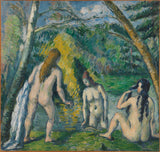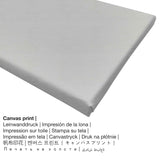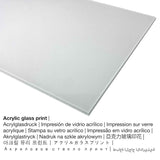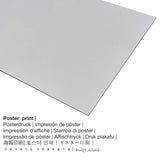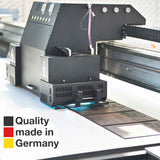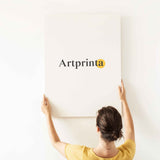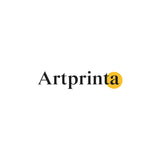Paul Cézanne, 1879 - ndị na-asa ahụ atọ - ọmarịcha nka
Ụtụ gụnyere. Mbupu gbakọrọ na ndenye ọpụpụ.
Summary
The nkà nke oge a masterpiece was painted by the impressionist artist Paul Cézanne in 1879. E ji nha ya see nke mbụ ya: Ogologo: 52 cm, obosara: 55 cm ma jiri usoro ihe arụpụtara ya Mmanụ, Canvas (ihe). Taa, ọrụ nka gụnyere na Petit Palais - Musée des Beaux-arts de la Ville de Paris nchịkọta nka dijitalụ dị na Paris, France. The public domain piece of art is supplied with courtesy of Petit Palais Paris.Also, the artwork has the creditline: . The alignment is in square format na nwere akụkụ ruru nke 1: 1, nke pụtara na ogologo ya na obosara. Paul Cézanne was a male painter from France, whose artistic style was primarily Impressionism. The Impressionist painter lived for a total of 67 afọ a mụrụ ya n'afọ 1839 ma nwụọ n’afọ 1906 na Aix-en-Provence.
(© Nwebiisinka - Petit Palais - Musée des Beaux-arts de la Ville de Paris - www.petitpalais.paris.fr)
pyramidal composition with three bathers disposed in a wooded area traversed by a broad beam of light which is reflected in water
Cezanne spent more than two hundred paintings, watercolors and drawings to the theme of the swimmers and bathers since the 1860s until 1906, the year of his death.
Soldiers genre, Bather, Nu, Reflet, Rivière, Forêt - Bois
Ọrụ tebụl nka
| Aha ọrụ nka: | "ndị na-asa ahụ atọ" |
| Nhazi: | sere |
| Okwu nche anwụ: | nkà nke oge a |
| Time: | 19th narị afọ |
| Afọ nka: | 1879 |
| Ogologo afọ nka nka: | 140 afọ |
| Ọkara nke ihe osise izizi: | Mmanụ, Canvas (ihe) |
| Nha izizi: | Ogologo: 52 cm, obosara: 55 cm |
| Ụlọ ihe ngosi nka: | Petit Palais - Musée des Beaux-arts de la Ville de Paris |
| Ebe ngosi nka: | Paris, France |
| Ibe weebụ: | Petit Palais - Musée des Beaux-arts de la Ville de Paris |
| Ụdị nka nka: | ngalaba ọha |
| Site n'aka: | Petit Palais Paris |
Onye na-ese ihe
| Aha onye nka: | Paul Cézanne |
| okike onye nka: | nwoke |
| Nationality: | French |
| Ọrụ nke onye na-ese ihe: | onye na-ese ihe |
| Obodo obibi: | France |
| nhazi ọkwa: | omenkà nke oge a |
| Ụdị nka: | Mmetụta |
| Nwụrụ na afọ nke: | 67 afọ |
| Afọ ọmụmụ: | 1839 |
| Afọ nwụrụ: | 1906 |
| Ebe ọnwụ: | Aix na Provence |
Nye iwu ihe ị họọrọ
Anyị na-enye ihe dị iche iche dị iche iche na nha maka ngwaahịa ọ bụla. Ya mere, anyị na-enye gị ohere ịhọrọ n'ime nhọrọ ndị a:
- Mbipụta iko acrylic (nke nwere ezigbo mkpuchi iko n'elu): A glossy acrylic glass print, often referred to as a UV print on plexiglass, will turn an artwork into magnificient décor and offers a good alternative option to dibond and canvas art prints. With an acrylic glass art print sharp contrasts and artwork details become visible with the help of the very fine tonal gradation of the picture. The plexiglass with real glass coating protects your selected art print against light and external influences for several decades.
- Mbipụta nke aluminom: Aluminium Dibond prints are prints on metal with an outstanding depth, creating a fashionable look thanks to a surface structure, which is non-reflective. For the Print On Aluminum Dibond, we print your selected artwork on the aluminium white-primed surface. The white & bright sections of the original artwork shine with a silky gloss but without glow. Colors are luminous in the highest definition, the fine details of the print appear crisp, and you can notice a matte appearance of the surface.
- Mbipụta kwaaji: A canvas direct print is a printed canvas stretched on a wooden stretcher. Your printed canvas of your favorite artwork will allow you to transform your art print into a large size artpiece as you would see in a gallery. Canvas prints are relatively low in weight, which means that it is easy to hang the Canvas print without any wall-mounts. Canvas prints are suitable for any kind of wall in your home.
- Poster (akwa akwa akwa): Our poster is a printed canvas with a slight surface structure. Please bear in mind, that depending on the absolute size of the canvas poster print we add a white margin of around 2 - 6cm around the work of art, which facilitates the framing with your custom frame.
Nkọwa ngwaahịa
| Bipụta ụdị ngwaahịa: | nka nka |
| Mmeputakwa: | dijitalụ mmeputakwa |
| Usoro nhazi: | mbipụta dijitalụ (Mbipụta UV ozugbo) |
| Production: | German mere |
| Stockdị ngwaahịa: | mmepụta ihe na-achọ |
| Ihe eji eme atụmatụ: | mgbidi mgbidi, ihe ndozi ụlọ |
| Ntuziaka onyonyo: | nhazi square |
| Ụdị anya: | 1: 1 ogologo ruo obosara |
| Nkọwa: | ogologo ya na obosara |
| Akụrụngwa dị: | Mpempe akwụkwọ, akwụkwọ mmado (akwụkwọ kwaaji), mbipụta ọla (aluminium dibond), mbipụta iko acrylic (nwere ezigbo mkpuchi iko) |
| Ọdịiche dị n'okirikiri akwa akwa akwa (akwa akwa): | 20x20cm - 8x8 ", 30x30cm - 12x12", 50x50cm - 20x20", 70x70cm - 28x28", 100x100cm - 39x39", 150x150cm - 59x59", 180-x180cm |
| Mpempe iko acrylic (nwere ezigbo mkpuchi iko) nha: | 20x20cm - 8x8", 30x30cm - 12x12", 50x50cm - 20x20", 70x70cm - 28x28", 100x100cm - 39x39" |
| Nhọrọ nha nke akwụkwọ mmado (akwụkwọ kwaaji): | 30x30cm - 12x12", 50x50cm - 20x20", 70x70cm - 28x28", 100x100cm - 39x39" |
| Nhọrọ nke mbipụta aluminom (aluminium dibond material) | 20x20cm - 8x8", 30x30cm - 12x12", 50x50cm - 20x20", 70x70cm - 28x28", 100x100cm - 39x39" |
| Igwe onyonyo: | na-enweghị etiti |
Ozi dị mkpa: We try what we can to depict our products with as many details as possible and to display them visually in our shop. Nevertheless, the tone of the printed materials and the printing may vary somehwat from the image on your monitor. Depending on the screen settings and the nature of the surface, color pigments can unfortunately not be printed one hundret percent realistically. Since our are printed and processed manually, there might also be slight variations in the motif's size and exact position.
© echebe nwebiisinka | www.artprinta.com (Artprinta)

